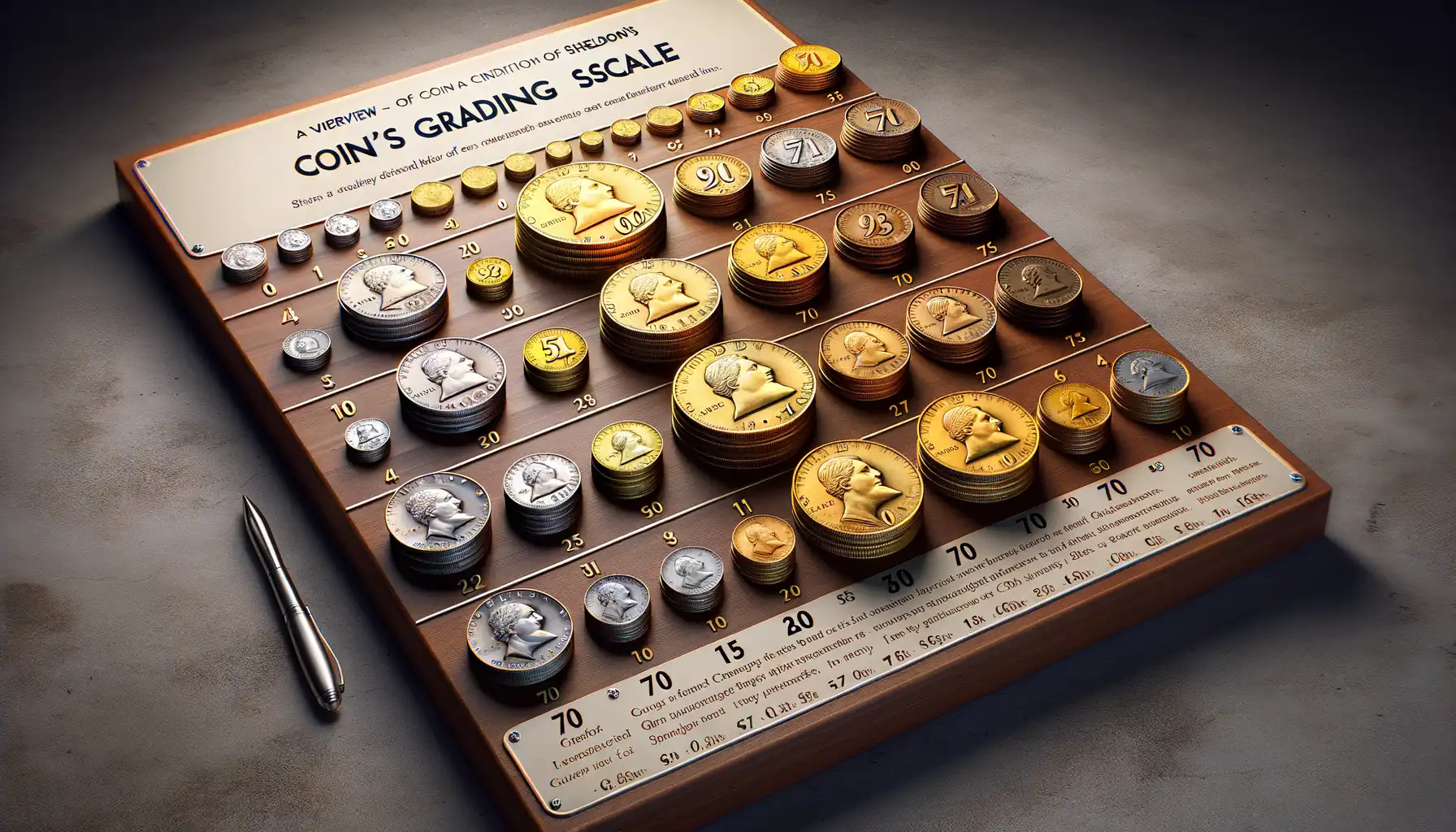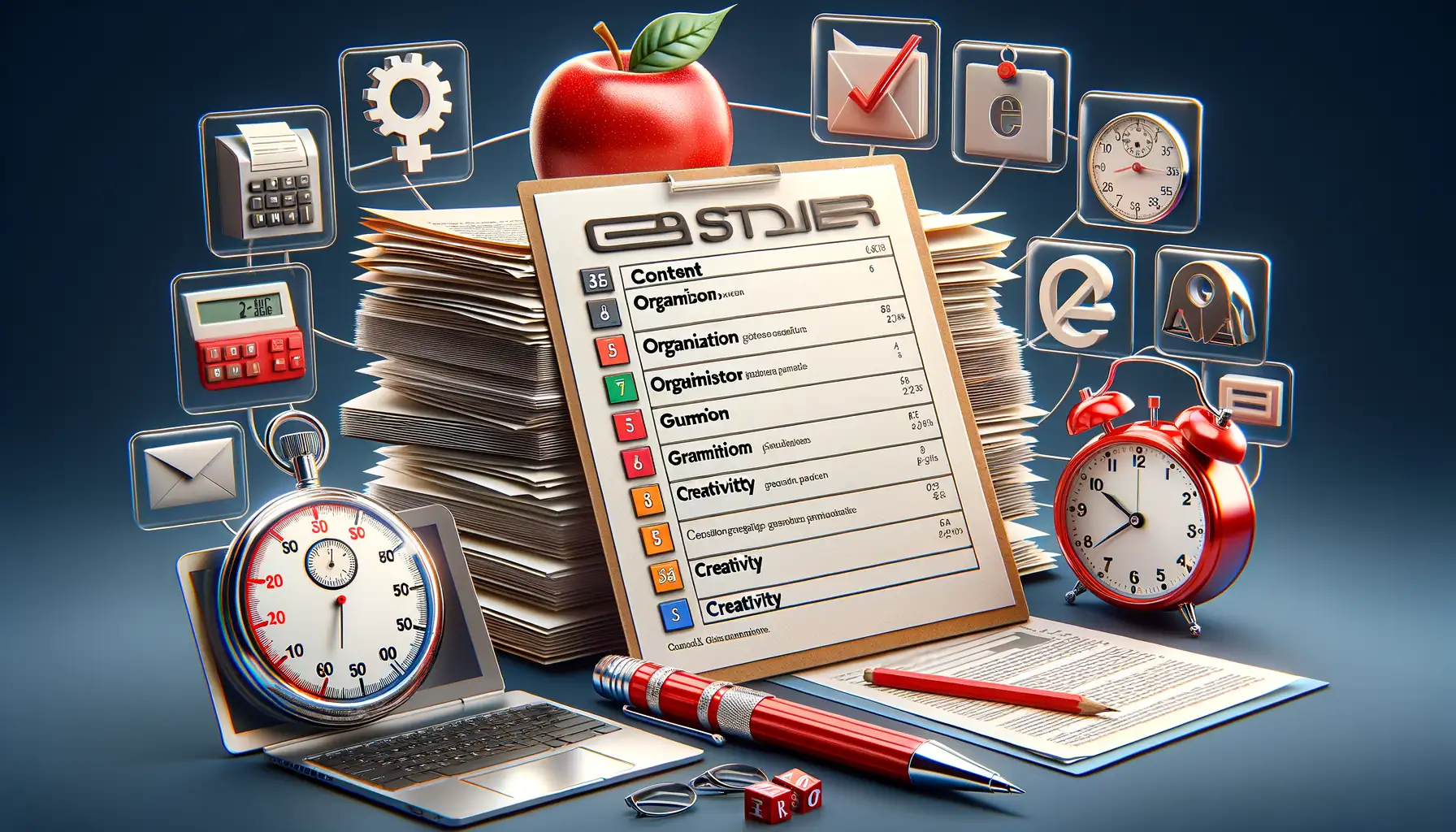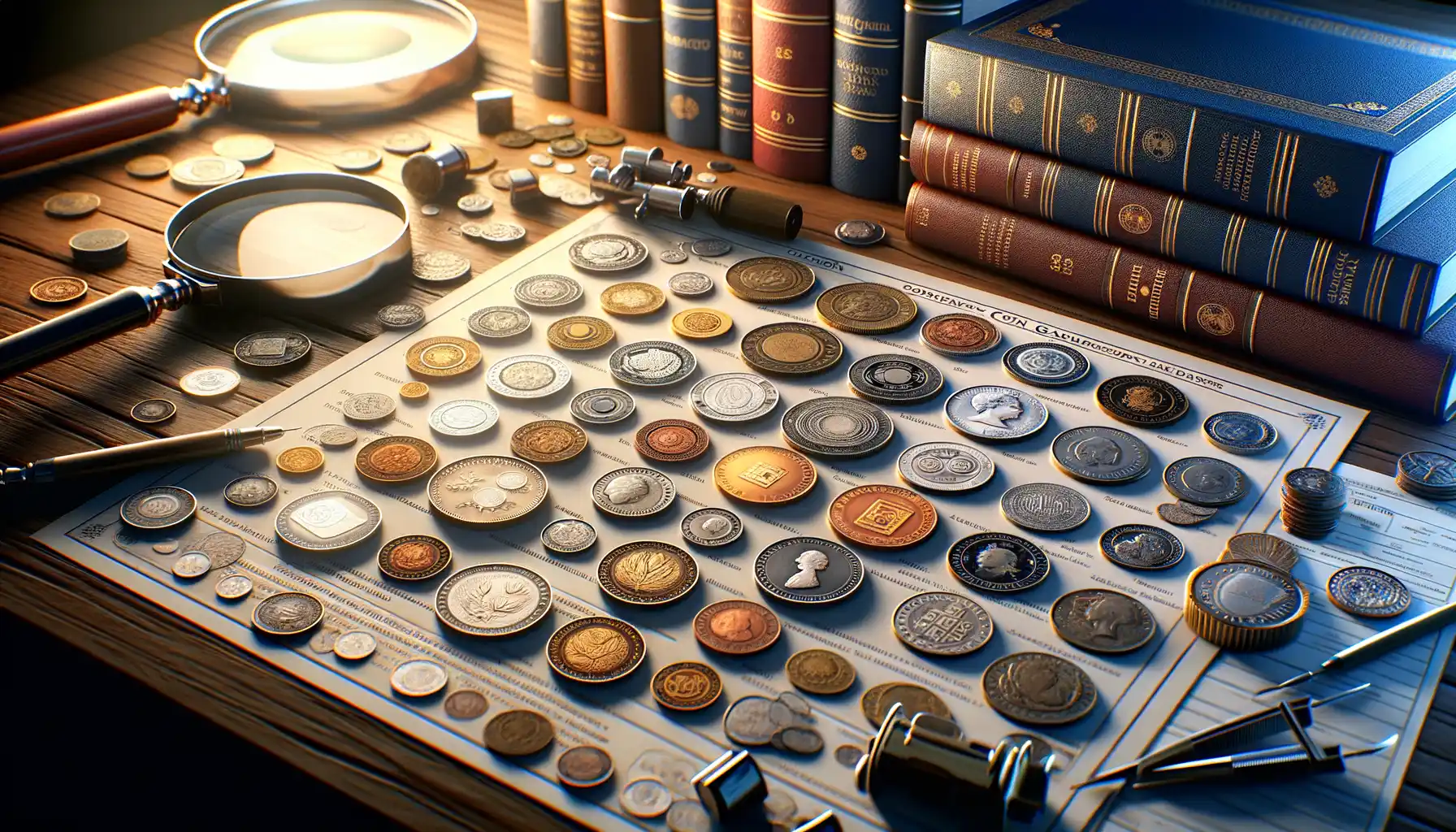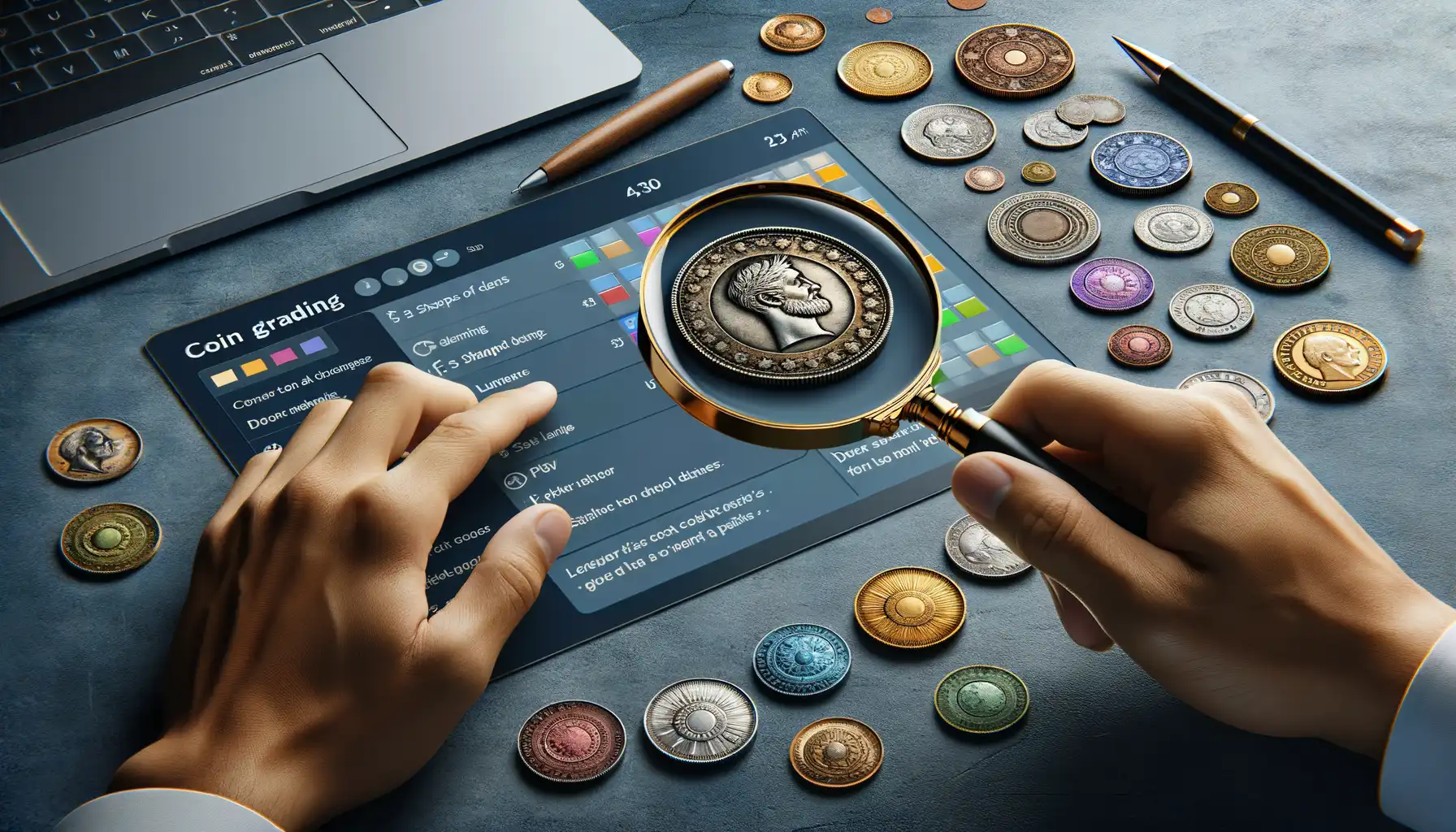What is Coin Grading and Why is it Important?
Decoding the Mystery of Coin Grading
Imagine holding a centuries-old coin in your hand—a tangible link to history. But how do you know if it’s worth more than just its weight in metal? That’s where coin grading steps in—a fascinating process that evaluates a coin’s condition, rarity, and eye appeal. Think of it as a meticulous report card for coins, where every scratch and shimmer tells a story.
Grading boils down to answering this critical question: how well has the coin stood the test of time? A detailed inspection of its surface, luster, strike quality, and other factors helps determine its grade on the universally accepted Sheldon Scale (more on that later).
Why Does Coin Grading Matter to Collectors?
If you’re wondering why it’s such a big deal, picture this: two coins, minted in the same year, can have wildly different values. What sets them apart is their grade. Knowing this unlocks distinct benefits:
- Value Assurance: A graded coin’s worth is easier to determine, giving buyers and sellers confidence.
- Authentication: Grading also verifies that your coin is genuine—not an imposter dressed up to deceive.
- Protection: Encapsulating graded coins shields them from damage, preserving their legacy.
In short, grading doesn’t just define a coin’s status—it transforms it into a treasure with a trusted story.
The Coin Grading Scale: An Overview of Sheldon’s System

Meet Sheldon’s Brilliant Scale: A Game-Changer for Coin Lovers
If there’s one thing that revolutionized coin collecting, it’s the genius of Dr. William H. Sheldon. In 1949, he didn’t just invent a grading system; he gave collectors a universal “language” to evaluate their treasures. Imagine trying to describe the shine on a coin or the minuscule nicks using vague terms—chaos! Enter the Sheldon Scale, offering precision wrapped in simplicity.
The system ranges from 1 to 70. Why 70? Because Sheldon believed this number left enough wiggle room to capture even the subtlest differences between pristine and heavily worn coins. Here’s a snapshot of this revolutionary scale:
- 1 (Poor): A coin barely hanging on—its design may be all but a ghost.
- 40 (Extremely Fine): Details still sharp, though some softness has crept in.
- 70 (Perfect): A unicorn in the wild, flawless under 5x magnification.
Each point feels like a story. That smooth spot on a 20-point coin? It whispers of centuries exchanged in bustling markets. The gleam on a 65-point gem? It hints at a life of quiet preservation. Thanks to Sheldon’s brilliant system, every collector can decode these tales with ease.
Key Factors Considered in the Grading Process

What Makes a Coin Truly Remarkable?
Grading a coin is like peering into its soul. It’s not just about the shine or the number stamped on the face – it’s about the story it whispers. Experts meticulously examine every curve, every fine detail to determine its grade, and here’s where the magic happens.
First up, there’s the coin’s condition, often referred to as the “eye appeal.” Think of this as meeting someone dressed to the nines – you can’t help but take notice. Scratches, discoloration, or wear can dampen this appeal. But don’t stop there; the luster – that radiant glow – plays a huge role. Is it a dazzling light show or just a dull flicker?
Let’s talk details. These pros scrutinize:
- Strike quality: Was the coin sharply or weakly struck during production?
- Surface preservation: Are there marks, dents, or hairlines?
- Rarity and age: An old, scarce coin usually scores big.
The Tale Hidden in a Coin’s Edges
How often do you pay attention to the edge of a coin? For graders, this is a treasure trove of clues. A coin might have what’s called a “reeded edge” (tiny grooves) or a smooth one – and these details authenticate its origin and history. They even look for adjustments around the rim, a sure sign of its minting process.
Every scratch, shimmer, and strike tells a chapter of the coin’s journey – and grading ensures its story is truly heard.
Popular Coin Grading Services and Certifications

Top Dogs in the Coin Grading Arena
When it comes to coin grading, you’re stepping into a world where every detail matters—like walking into an art gallery where magnifying glasses are standard issue. Enthusiasts and professionals alike swear by a few standout names that have built a reputation for precision, consistency, and trust.
The heavyweights? Say hello to the likes of Professional Coin Grading Service (PCGS) and Numismatic Guaranty Company (NGC). These guys are more than just acronyms—they’re the Sherlock Holmes of the coin world, scrutinizing everything from mint luster to micro scratches. Oh, and their certification slabs? They’re like tiny museums for your coins, ensuring authenticity while keeping them safe from damage.
What to Look For in Certification
Not all certifications are created equal. When choosing a grading service, consider these key points:
- Reputation: PCGS and NGC are considered the gold standard, but others like ANACS also hold clout.
- Security Features: Look for slabs with holograms or barcodes to avoid counterfeits.
- Market Value: A coin graded by PCGS or NGC can fetch a higher price at auction!
Trust me, once you’ve had a coin professionally graded, you’ll never go back—it’s like putting an artist’s signature on a masterpiece!
Tips for Beginners to Evaluate and Grade Coins

Start with a Collector’s Curiosity
When you’re just dipping your toes into the world of coin grading, it might feel like entering a secret club. But don’t worry—every expert once stood exactly where you are now, squinting at their first coin under a desk lamp! The key? Let curiosity drive you. Before diving into countless guides or memorizing terms like “planchet flaws,” grab a coin from your pocket or an old keepsake and examine it closely.
Ask yourself: Does it have scratches or wear? How detailed is the design? Is the luster (that shiny surface) still intact? You’ll quickly notice how each coin tells its own story.
Your Beginner Friendly Grading Toolkit
To make your journey smoother, arm yourself with a few essential tools. These aren’t fancy, but they’ll teach you to see coins in a whole new light:
- A good magnifying glass (10x works perfectly—time to play detective!).
- Soft cotton gloves to avoid smudges or scratches.
- A reference book or app that lists coins’ features and values.
The more hands-on you get, the sharper your instincts will become. Trust me, when you spot that rare detail others miss, it feels like finding buried treasure!
Now, go forth and let those coins whisper their secrets to you.
